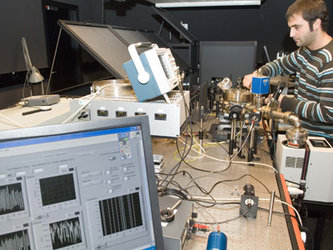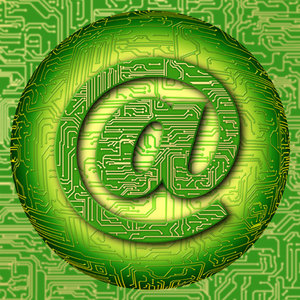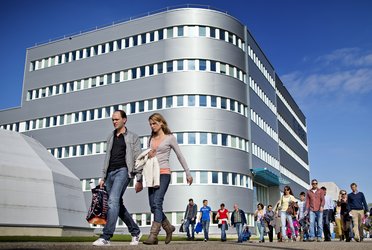What kind of testing does the Opto-Electronics laboratory carry out?
The Laboratory is currently made up of three main units, each performing different types of tests. The first is the Laser Lab, divided between laser-induced contamination and laser-induced damage testing.
Materials in vacuum conditions are prone to 'outgassing' – the gradual release of gaseous substances. Laser-induced contamination testing involves investigating how high-energy laser radiation interacts with the results of outgassing within the laser vessel, leading to deposition of absorbing organic materials in the irradiated region of delicate optical parts, degrading laser performance over time. The Laboratory seeks to characterize this phenomenon and identify ways to overcome it.
Laser-induced damage testing involves identifying the safe levels of energy to avoid damage to each optical component of the laser. Laser energies above a given threshold can induce damage, superficial melting and eventually cracking of optical surfaces. But working space lasers must perform reliably for months or years – the lidar aboard ESA's ADM-Aeolus satellite is planned to fire 4.6 billion laser shots over the 39 month duration of the mission. Accordingly 'lifetime' testing is also performed on the ground to ensure reliability.
The second unit of the Laboratory is a Mobile Lidar Unit carried in an ESA van. It follows the same general design of planned spaceborne lidars, except this Raman lidar looks up into the atmosphere instead of down sampling aerosol populations, cloud patterns and optical depth. Used to perform tests and simulations related to future lidar missions the information this unit gather also serves to support ESA missions and projects in other ways, for instance gathering 'ground truth' data used to assess the performance of Earth-observing satellite sensors.
The third unit, currently approaching completion, is the Laser Diode Testbench. The laser equivalent of LED’s (light emitting diodes), laser diodes are semiconductors which produce laser light when an electrical current is applied. They serve as compact laser sources for space, and the Testbench will perform endurance tests under a range of environmental conditions including vacuum and temperature extremes to investigate degradation, lifetime and failure modes of laser diodes in space environments. The Laser Diode Testbench is complemented by a characterization setup for detailed performance evaluation of different types of laser diodes.











